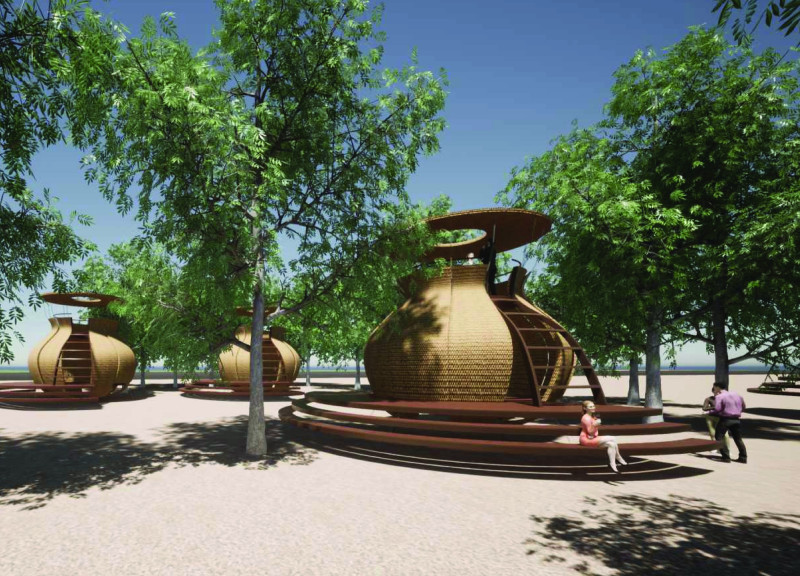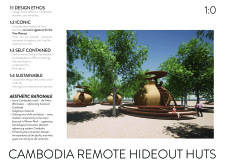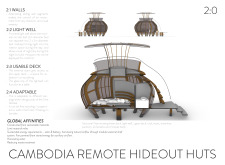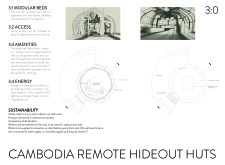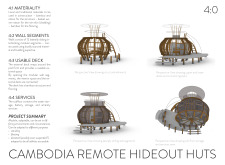5 key facts about this project
The Vine Retreat is located in Cambodia and offers a fresh approach to sustainable living. The design includes several self-contained huts that blend with the natural landscape while providing a unique experience for visitors. Inspired by local culture, particularly the form of the Ankur Wat towers, the overall design creates a recognizable architectural character. The huts can be arranged in different ways—free-standing, suspended, or floating—allowing them to adapt to various environments and settings.
Design Ethos
The design captures the essence of Cambodian culture and visual identity. By using elements that reflect the country’s historical architecture, the project enriches the experience of its guests. Each hut is designed to be distinct yet harmoniously integrated into its surroundings. The arrangement of the huts can be flexible, either grouping them together or placing them individually to respect the natural environment.
Sustainability Features
Sustainability is a key focus, evident in the strategies for energy and water management. Each hut incorporates systems that enable off-grid living. Solar panels are utilized to harness energy, while rainwater collection systems support water needs. The use of waterless composting toilets demonstrates a commitment to minimizing the environmental footprint, providing essential amenities without harming the surroundings.
Spatial Configuration
Inside each hut, the layout encourages a connection between indoor and outdoor spaces. Sliding wall segments are utilized to promote airflow and visual access, creating an engaging living environment. A central light well brings in natural light and offers views of the sky. This design fosters an immersive relationship with the landscape, allowing guests to experience nature from within.
Community and Interaction
The upper decks of the huts are accessible and create shared spaces for relaxation and social interaction among guests. This arrangement balances community and privacy, enhancing the overall experience of the retreat. Individual huts provide personal space while encouraging connections within the retreat. The careful placement of these communal areas aims to cultivate a friendly atmosphere.
Local craftsmanship plays an important role in construction, showcasing the skills and artistry of the region. Each element of the design is thoughtfully considered, from the modular structure of the huts to the careful handling of light and space. The outcome is a project that serves its purpose while remaining attentive to its cultural and natural context.


